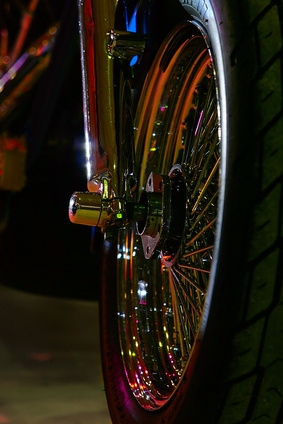
Aluminum and magnesium are two metals commonly used in the production of vehicle rims. These metals are abundant in nature, and have similar properties that are used to create efficient and visually appealing rims. Aluminum and magnesium rims are lightweight and increase gas mileage, but they have important differences when it comes to durability and price.
Magnesium rims are generally a few pounds lighter than aluminum depending on rim size, therefore magnesium rims are preferred for vehicles built for racing. They lighten the vehicle, which increases overall acceleration and leads to better gas mileage. Wheel balancing isn't needed as much with magnesium rims. Handling, steering and braking is more responsive, especially if magnesium rims are paired with low-profile tires.
Magnesium rims will ignite if exposed to the extreme temperatures of a vehicle fire. Magnesium burns very hot, and a magnesium fire cannot be extinguished using water. Aluminum has a low melting point, will not ignite like magnesium and cools quickly.
Aluminum rims can bend when encountering a large pothole, which allows the driver to maintain control of the vehicle. Magnesium rims, however, can crack and fail -- leading to failure of the entire wheel. Such a failure can cause the driver to lose control of the vehicle. Magnesium rims need to be replaced more often than aluminum, but durability will degrade less with regular maintenance.
Magnesium rims require much more maintenance than aluminum. Aluminum rims will not rust and can be cleaned easily. Many auto stores sell products to buff and clean aluminum rims. Magnesium rims need to be sealed and painted. Any cracks or chips need to be protected against air exposure. Air exposure will cause the bare metal to become pitted and weak. Repairing rim damage on a regular basis is considered too much work for most drivers.
Magnesium rims, which are usually aftermarket products, are among the most expensive on the market. Aluminum or steel rims are standard on most all vehicles. From a cosmetic standpoint, aluminum rims can appear identical to more-expensive magnesium rims. Due to the price difference and factory standards, more drivers use aluminum or steel.